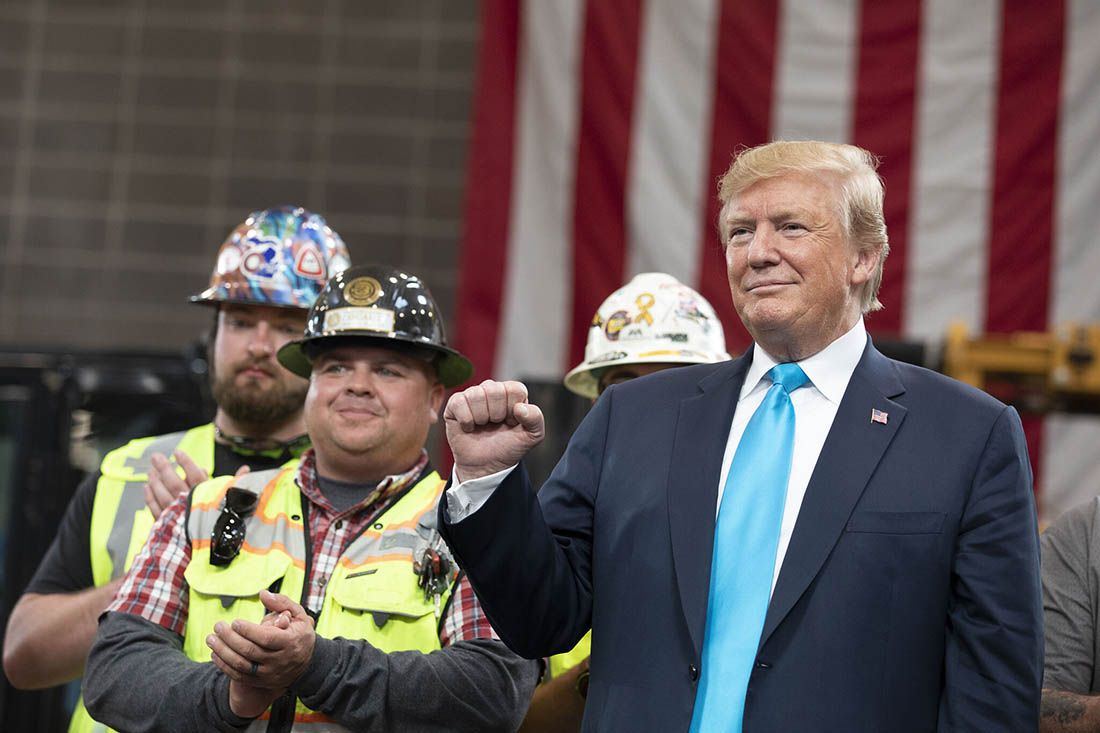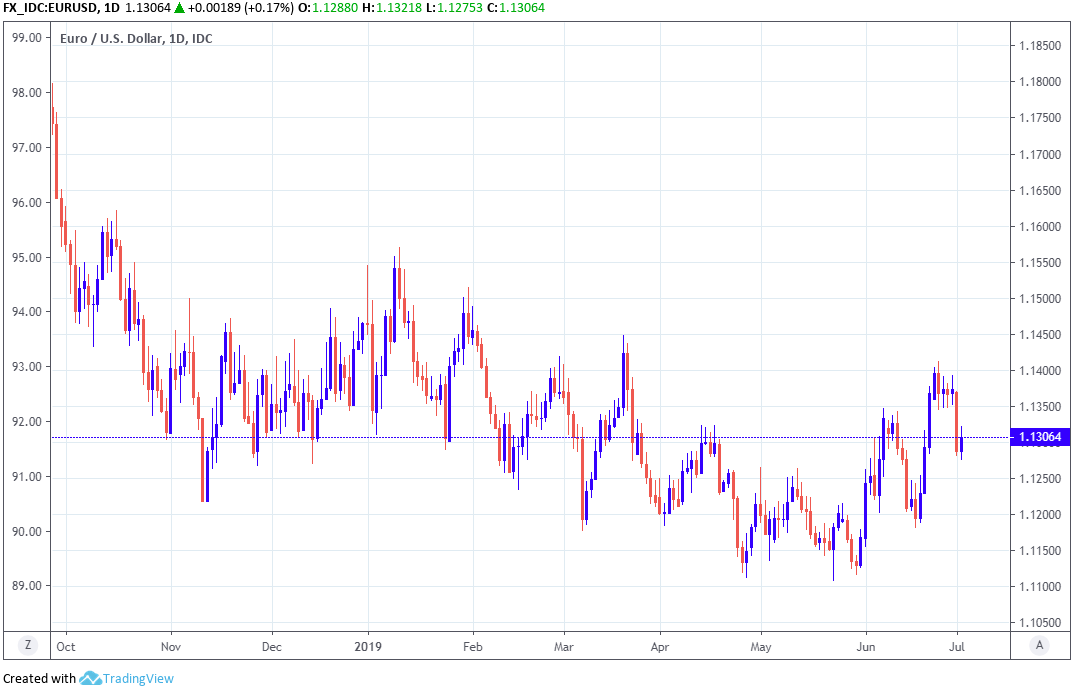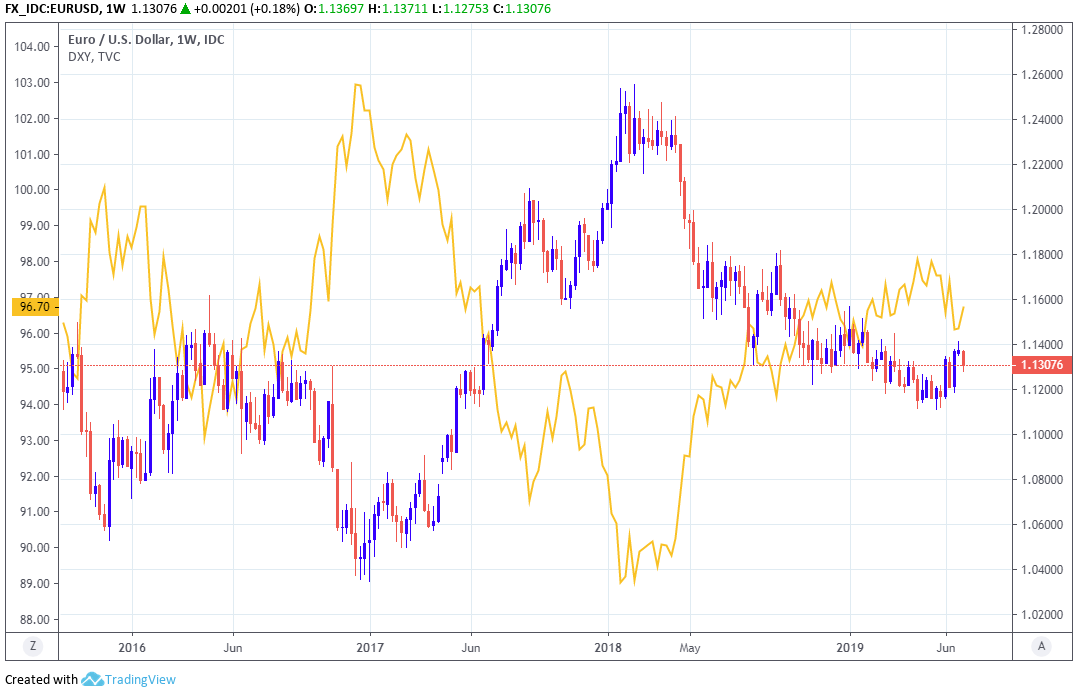Euro-Dollar Rate Fights to Hold 1.13 Handle as Trump's Airbus Tariffs Rattle Market
- Written by: James Skinner

Image © White House
- EUR fights to hold 1.13 as ING eyes more tight range-bound trading.
- Airbus-related tariffs stoke fears of Q4 car levies, U.S.-EU trade war.
- But Commerzbank and CBA analysts look for gains into year-end.
The Euro was fighting to hold above the 1.13 handle against the Dollar Tuesday after retreating further from June highs in the new week as an increase in U.S. tariffs on European Union goods served as a reminder for the market of the risks posed to the single currency by President Donald Trump's trade policies.
The U.S. Trade Representative said late Monday that it's added a range of additional EU consumer goods to a list of items that are expected to be subjected to trade tariffs as a result of illegal subsidies allegedly provided to Airbus by European governments.
Trade in the additional goods included on the list this week is said to be worth $4 bn annually, which takes the total value of all the levies likely to be imposed up to $25 bn, although the dispute is currently subject to an arbitration proceeding so it's not yet clear if and when the tariffs will actually take effect.
"The list covers a range of goods from a number of cheeses to coffee, olives and pasta. The proposal comes as the US condemns subsidies to Airbus that were ruled illegal by the WTO and is reported to have weakened competitive position of its main rival US-headquartered Boeing," says John Meyer, head of research at SP Angel.
This move came after the European Commission said in April that it's preparing a list of U.S. products, exports of which are worth around $20 bn per year, it intends to impose tariffs on as a result of allegations that Washington has subsidised Boeing through advantageous tax giveaways.
The dispute between the European Union and United States over subsidies to Airbus and Boeing dates all the way back to 2004 but is still being litigated under auspices of the World Trade Organization Appellate Body. However, it comes at a time when tensions between the U.S. and EU are running high.
"This section 301 investigation into large civil aircraft has nothing to do with the section 232 investigation into US imports of EU autos, but serves as a reminder that auto tariffs could still be on the agenda in 3Q19. The bullish EUR/USD momentum of last week has been lost and a 1.1260/70 to 1.1350 range looks most likely in the near term," says Chris Turner, head of FX strategy at ING Group, in a note to clients Tuesday.

Above: Euro-to-Dollar rate shown at daily intervals.
President Donald Trump delayed on May 17, for at least 180 days, a 25% tariff on cars imported from the European Union. He'd threatened the levies as far back as July 2018 in the name of national security, although many see that as merely an official pretext.
The U.S. president made reducing the U.S. trade deficit with the rest of the world using tariffs and negotiations to combat "unfair" trading practices a key part of his 2016 manifesto. Since being elected he's engaged in trade skirmishes with China, Canada, Mexico, the EU and a range of other countries.
And although the car tariffs were delayed in May, fears are that the White House is simply waiting for an eventual deal to end the U.S. trade war with China before turning its attention to the economically beleaguered European Union.
"Our trade team believes the auto-tariffs will be imposed in 4Q19, which also limits the EUR/USD upside potential as this would be a clear negative for the eurozone economy," Turner writes, in a June note to clients.
The car industry is a significant source of jobs in many parts of Europe but it's under pressure not only from the threat to its U.S.-bound exports but also from a global economic slowdown and a range of regulatory interventions.
Global growth slowed last year and new European Union rules relating to the measurement of emissions produced by cars drove production in the sector to a standstill in the third-quarter of 2018, which made a significant contribution to the 0.2% German economic contraction seen during the period.
Those came on top of the uncertainty cast over the sector by government pressure to reduce the emissions output of cars, and in some cases plans to phase out the sale of diesel and petrol cars. In other words, the last thing the sector needs is tariffs on exported cars, which would come at a bad time for the Eurozone economy and Euro.

Above: Euro-to-Dollar rate shown at daily intervals, alongside the Dollar Index (yellow line, left axis).
"EUR/USD has scope to edge higher even if the ECB cuts policy interest rates because: (i) Interest rate futures are pricing‑in more interest rate cuts in the US than they are in the Eurozone, (ii) The euro is undervalued based on the average of the ECB’s three indicators of harmonized competitiveness, (iii) Underlying demand for the euro remains solid as the Eurozone current account surplus totalled €315bn (2.8% of GDP) in April," says Elias Haddad at Commonwealth Bank of Australia.
Any trade conflict with the U.S. would come at a bad time for Europe's economy, which is expected to have slowed in the second quarter of 2019 after having experienced only a brief pickup in the New Year.
Eurozone economic growth picked up from 0.2% to 0.4% in first-quarter of 2019 but surveys have since suggested strongly that the economy turned lower again at the start of the second quarter. Official data for the three months to the end of June won't be available until mid-August.
The early 2019 performance came hard on the heels of a disappointing 2018 year where GDP growth declined from 2.3% to 1.8%. Growth fell by half in the latter part of the year, with third quarter GDP growth declining from 0.4% to 0.1% and then coming in at only 0.2% in the final quarter.
As a result, European Central Bank (ECB) President Mario Draghi said in June the bank will embark upon fresh interest rate cuts and another bond buying program if the growth and inflation outlook doesn't improve over promptly.
However, CBA says this should do no real harm to the Euro going forward because the Federal Reserve is also expected to cut rates in the U.S. Meanwhile, technical analysts at Commerzbank say the Euro is still in line for a steep recovery over the coming months.
"EUR/USD has backed away from the 1.1411 55 week moving average. The Elliott wave count is suggesting a small near term retracement into the 1.1265/30 band and beyond this we look for further gains. Above 1.1412 (last weeks high) we look for a test of the 1.1570 2019 high. Slightly longer term we target 1.1815/54 (highs from June and September 2018)," says Karen Jones, head of technical analysis at Commerzbank.
Jones, who draws her analysis from studies of trends and momentum on the charts rather than traditional fundamentals, says the Euro should recover the 1.18 handle over the next three months or so. This would be the Euro-to-Dollar rate's highest level since May 2018.
Time to move your money? Get 3-5% more currency than your bank would offer by using the services of foreign exchange specialists at RationalFX. A specialist broker can deliver you an exchange rate closer to the real market rate, thereby saving you substantial quantities of currency. Find out more here.
* Advertisement




